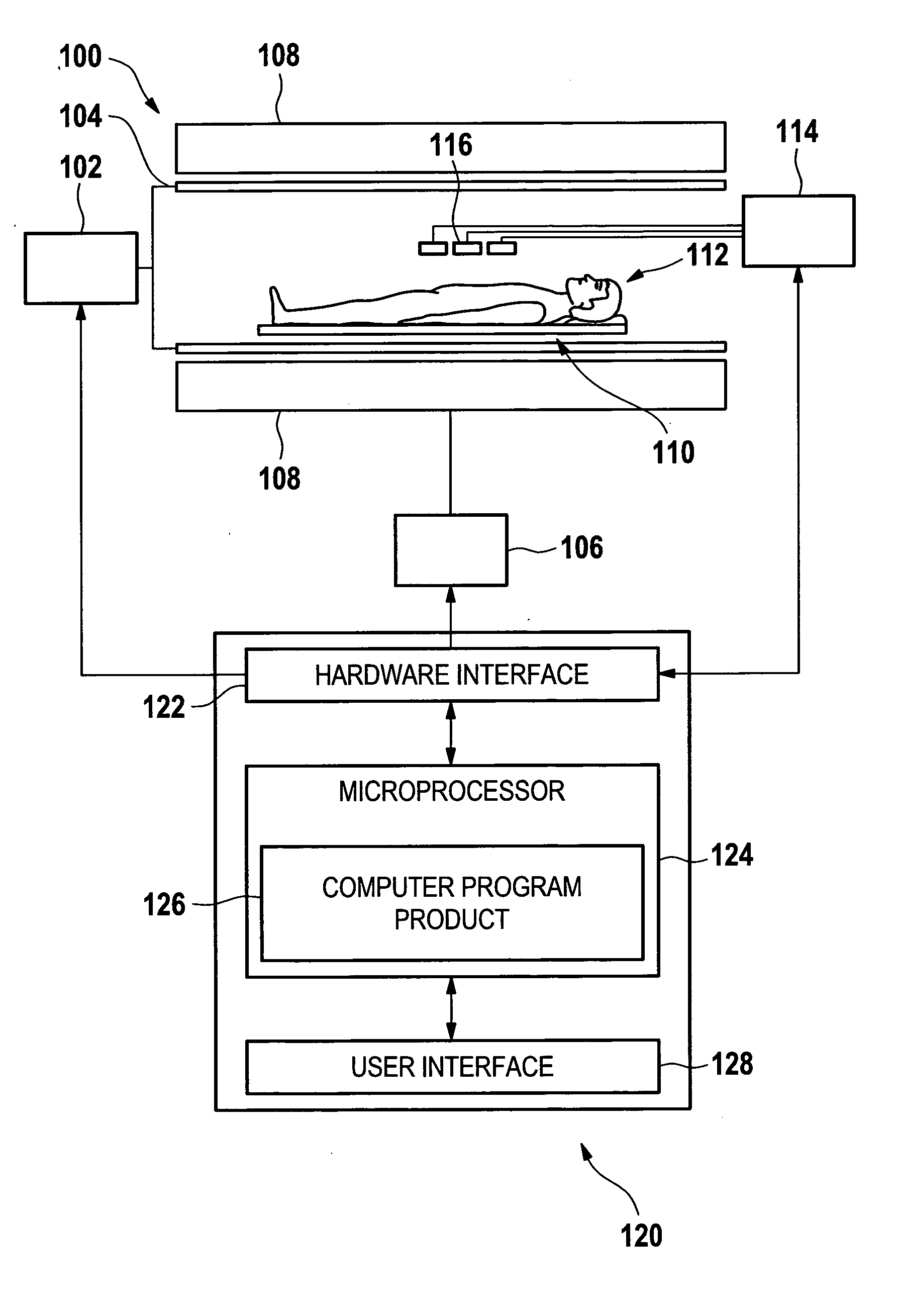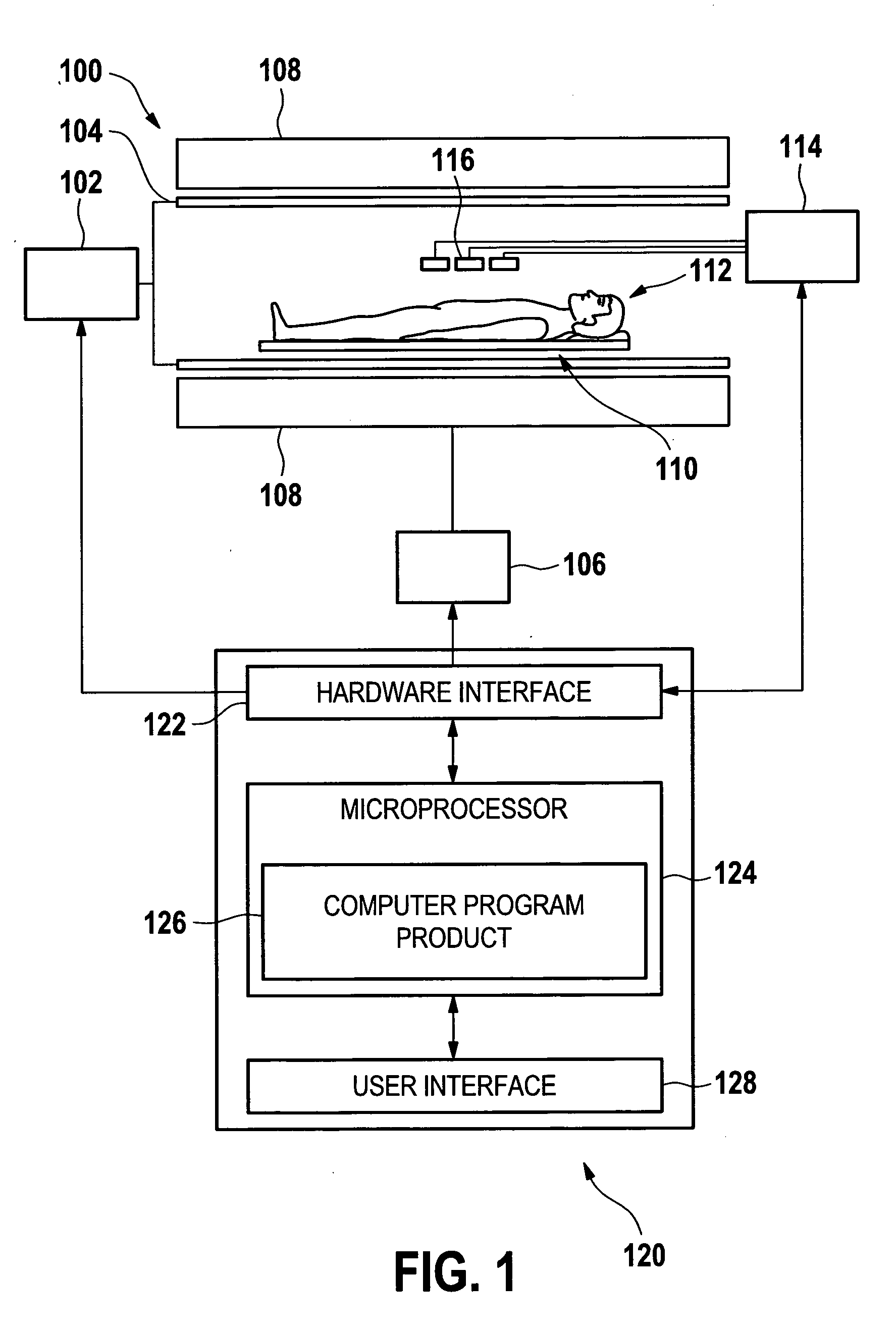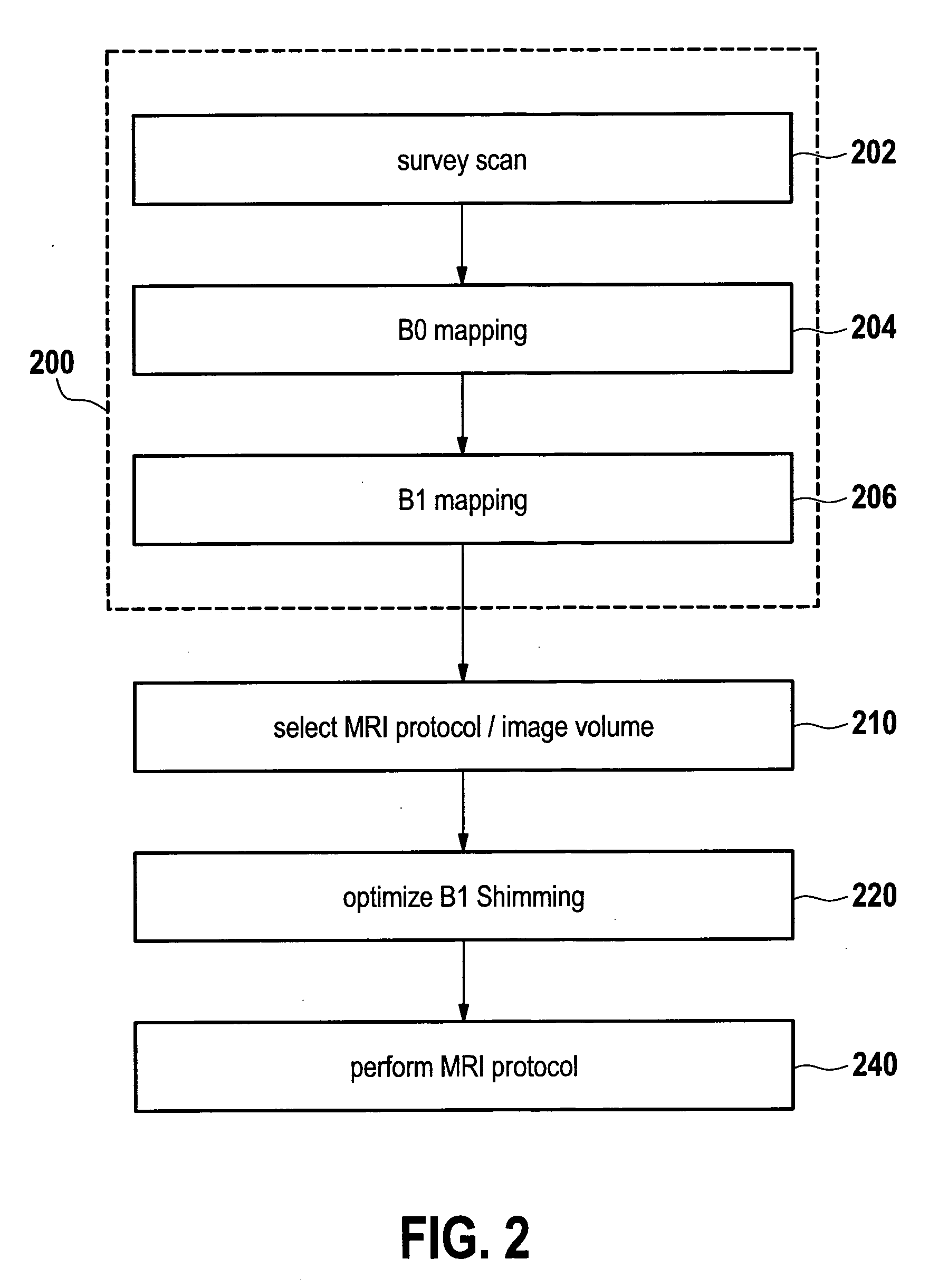B1-mapping and b1l-shimming for MRI
a technology of mri and mapping, applied in the field of mri mapping and mapping, can solve the problems of reducing the examination time, reducing the mri sequence, and imposing the challenge of increasing the magnetic field strength used for clinical mri, so as to reduce the examination time, and improve the efficiency of workflow
- Summary
- Abstract
- Description
- Claims
- Application Information
AI Technical Summary
Benefits of technology
Problems solved by technology
Method used
Image
Examples
example 1
[0066]A liver examination is performed. As part of the preparation a low-resolution 3D volume B1 transmit mapping scan is performed to obtain the individual transmit coil sensitivities of a two-channel transmit system. For this purpose a 3D EPI accelerated scanning is performed using a modification of the approach described in Yarnykh. A portion of the modified pulse sequence diagram is shown in FIG. 3. The approach described in Yarnykh is modified by using EPI read-out pulses (334) to speed up 3D imaging. The volume of the B1 map needs to be much larger than the liver region. This is demonstrated by FIG. 4. Based on the acquired field maps, appropriate shimming coefficients for the RF objects of a specific MRI liver protocol are obtained. First the B1 homogeneity is optimized in a volume that corresponds to the FOV of a 3D gradient echo imaging scan that should be used in this example. This scan employs magnetization preparation. Thus, secondly for one of the magnetization preparat...
example 2
[0070]A pelvis examination is performed using local imaging. To image locally, a 3D RF pulse should be used to facilitate local signal excitation. This RF pulse has to be applied in an accelerated manner using an 8 element transmit system. A combined volume B1 and B0 mapping pre-scan is performed covering a larger volume than the one in that the actual scan will be performed. A parallel imaging-accelerated 3D gradient echo scan is used for mapping according to the Yarnykh approach. During the TR1 only a single echo is sampled, whereas during the long TR interval (TR2) an EPI-type read-out is performed, that samples the same profile several times after excitation. This allows performing chemical shift encoding to separate water and fat and to gain a B0 field map in a post-processing step. Based on the measured volume B1 maps the relevant coil sensitivities and the B0 inhomogeneity can be extracted to perform appropriate transmit SENSE RF pulse design. This is described in Katscher U,...
PUM
 Login to View More
Login to View More Abstract
Description
Claims
Application Information
 Login to View More
Login to View More - R&D
- Intellectual Property
- Life Sciences
- Materials
- Tech Scout
- Unparalleled Data Quality
- Higher Quality Content
- 60% Fewer Hallucinations
Browse by: Latest US Patents, China's latest patents, Technical Efficacy Thesaurus, Application Domain, Technology Topic, Popular Technical Reports.
© 2025 PatSnap. All rights reserved.Legal|Privacy policy|Modern Slavery Act Transparency Statement|Sitemap|About US| Contact US: help@patsnap.com



